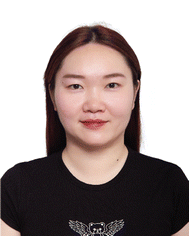Introduction to the Light-nanoMatter Interactions themed collection
Liyan Ming
 *a,
Erving Ximendes
*a,
Erving Ximendes
 *a and
Riccardo Marin
*a and
Riccardo Marin
 *abc
*abc
aNanomaterials for Bioimaging Group (nanoBIG), Department of Materials Physics, Universidad Autónoma de Madrid, 28049, Madrid, Spain. E-mail: liyan.ming@estudiante.uam.es; erving.ximendes@uam.es
bIntelligent Optical Nanomaterials (IONs) Group, Department of Molecular Sciences and Nanosystems, Università Ca’ Foscari di Venezia, 30170, Mestre-Venice, Italy. E-mail: riccardo.marin@unive.it
cInstute for Advanced Research in Chemical Sciences (IAdChem), Universidad Autónoma de Madrid, 28049, Madrid, Spain
Since the dawn of civilization, light has captivated humankind, igniting wonder and driving progress. From the earliest fire-lit gatherings to today's cutting-edge photonic technologies, our ability to manipulate light continues to reshape society. Today, our understanding of light–matter interactions is at the forefront of groundbreaking scientific and technological advances, especially in the realm of nano- and micromaterials, where photons and matter meet in unexpected, thrilling ways.
A plethora of research fields centered on light–(nano)matter interactions have bloomed over the past decades. This surge is mirrored by the rapid increase in the number of journals and publications. Thus, newcomers—and even seasoned researchers venturing into new domains—face the challenge of mastering the fundamentals while keeping pace with state-of-the-art developments. It was with these considerations in mind that the Light-nanoMatter Interaction (LnMI) Summer School was conceived.
Between June 30th and July 4th, 2024, the inaugural LnMI Summer School took place at La Cristalera—a learning centre of the Universidad Autónoma de Madrid—nestled in the mountains overlooking Spain's capital. The event's goal was to provide young researchers with a bird's-eye view of the diverse fields where nano- and micromaterials meet with light. This first edition featured eleven speakers from academia and industry across eight countries: Dr Emory Chan (USA), Prof. Luisa de Cola (Italy), Prof. Markus Suta (Germany), Prof. Blanca del Rosal (Australia), Prof. Xiaowang Liu (China), Prof. Carlos Brites (Portugal), Dr Katherine Villa (Spain), Dr Lucas Besteiro (Spain), Dr Andréa de Camargo (Germany), Dr Isabel Gessner (Germany), and Prof. Muralee Murugesu (Canada).
Rather than overloading the five-day program, the schedule was relaxed—featuring one-hour talks interspersed with coffee breaks and extended lunchtimes. Coupled with the intimate environment of the venue, this format fostered lively, relaxed interactions between attendees and speakers. This atmosphere was maintained and enhanced during the open-air poster sessions, which culminated in the awarding of two RSC-sponsored “Best Poster” awards.
This “LnMI 2024” cross-journal themed collection showcases tutorial manuscripts from several of the speakers who participated in the school, alongside experimental papers published across the Materials and Nanoscale RSC journal portfolio—some authored by the school's very attendees. Among these, a visually engaging Focus Article by A. Skripka and E. Chan unravels “the myths and mysteries of photon avalanching nanoparticles” (https://doi.org/10.1039/D4MH01798F). There, the authors demystify the physics behind this highly nonlinear photophysical phenomenon that powers super-resolution microscopy and ultra-sensitive force sensors. Hernández-Álvarez and co-workers put this type of non-linear luminescence to good use, reporting on a 3D-printed glass-ceramic temperature sensor based on the photon-avalanche of thulium ions (https://doi.org/10.1039/D4TC05088F). Luminescence also holds the key to innovative computing, as elegantly showcased by C. Brites in his Focus Article on molecular logic (https://doi.org/10.1039/D5MH00192G). In this accessible article, the author lays out the fundamentals of harnessing the photophysical properties of trivalent lanthanide ions for Boolean logic operations at the molecular scale. Staying within the realm of luminescent lanthanide ions, M. Suta zooms in on the iconic NaYF4:Yb3+,Er3+ phosphor, revealing the secrets behind its status as effective luminescent thermometer (https://doi.org/10.1039/D4NR04392H). By analyzing this exemplary Boltzmann luminescent thermometer, the author also highlights how transitioning from micro- to nanocrystals impacts thermometric performance. In their thought-provoking Opinion piece, X. Liu et al. advocate for the use of afterglow microparticles in crafting advanced photonic crystals (https://doi.org/10.1039/D4MH01541J). Their innovative approach employs silica as a host material, allowing diverse emitters to be embedded and generate enduring, multi-colour photoluminescence. The Review Article by Bucchieri, Freyria, and Bonelli provides a comprehensive snapshot of the field of triplet–triplet annihilation (TTA) upconversion sensitized by nanoparticles (https://doi.org/10.1039/D5TA01541C). In these hybrid systems, quantum dots meet organic dyes in an extremely careful design to provide anti-Stokes emission with a potential to push the boundaries of sustainable energy generation and photocatalysis. Moving to non-luminescent optical materials, L. Besteiro and co-workers dive into the use of light to impart chirality to plasmonic nanoparticles (https://doi.org/10.1039/D5MH00179J). The authors discuss the theory behind this technique that, despite being in its infancy, holds incredible potential in the development of highly selective sensors of chiral molecules and enantioselective photocatalysts. These articles represent just a glimpse of the exciting contributions published in RSC journals on light–(nano)matter interaction over the past couple of years.
We also extend our heartfelt thanks to the sponsors of LnMI 2024: the RSC, the Institute for Advanced Research in Chemistry (IAdChem), and the National Rare Earth Functional Materials Innovation Center. Our gratitude also goes to our colleagues at Northwestern Polytechnical University (Xi’an), whose large delegation of students enriched the event. Stay tuned for the next edition of the LnMI Summer School! In the meantime, we invite you to explore and enjoy this curated collection!
| This journal is © The Royal Society of Chemistry 2025 |



